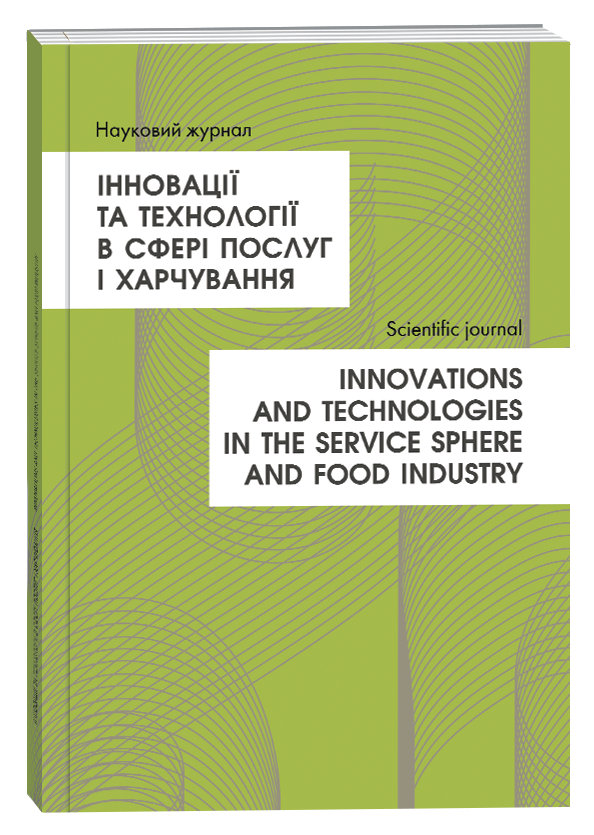RESEARCH ON TERRITORY IMAGE: IDENTIFYING TARGET AUDIENCES AND MEASURING THEIR PERCEPTION OF SIGNIFICANT PLACE PARAMETERS
Abstract
The article explores the concept of image from a marketing perspective, analyzing various approaches to its definition and significance for places and territories. Attention is given to the views of both international and domestic researchers on the concept of territory image, highlighting its multifaceted nature. The study investigates the relationship between the image of a country, industries, companies, and brands, providing an understanding of how these factors influence the competitive advantages of territories. The article introduces an algorithm for measuring the image of territories, which includes identifying key target audiences: local residents, visitors, entrepreneurs, investors, and foreign buyers. Special emphasis is placed on methods for identifying and evaluating significant parameters for each audience. Key parameters critical for evaluating territories are outlined, including economic potential, ecological attractiveness, social infrastructure, cultural uniqueness, and reputation. Identifying these characteristics is a crucial step in developing effective strategies for promoting territories. The article examines the importance of assessing parameters that affect audience perception of territories and provides approaches for their analysis. Special attention is paid to aspects of developing the image of territories through the use of marketing tools. The article discusses methods of integrating branding into a comprehensive strategy for territory promotion. Notably, the significance of collaboration among various stakeholders, such as local authorities, businesses, communities, and investors, is emphasized to create a unique and appealing image of the territory. Proposed methodologies aim to facilitate effective implementation of territorial branding focused on long-term competitiveness. The influence of socio-economic, historical, and cultural aspects on image formation is analyzed. It is noted that the reputation of territories is shaped by numerous factors, including historical context, availability of natural and economic resources, level of infrastructure development, environmental conditions, and cultural features. The complexity of changing a negative image is highlighted, emphasizing the need for a comprehensive approach to improvement. The article also addresses prospects for further research in this field, particularly the development of new tools for assessing and measuring territory images. Special focus is given to studying the impact of modern technologies and digital communications on the image formation process, as well as adapting successful international practices to local conditions. This provides a deeper understanding of the mechanisms for creating competitive advantages of territories through their image.
References
Kotler Ph., Haider D. H., Rein I. J. Marketing Places: Attracting Investment, Industry, and Tourism to Cities, States, and Nations. Free Press, 1993. 388 p.
Anholt S. Competitive Identitiy: The New Brand Managmant for Nations, Cities and Regions. 1st Edition. Palgrave Macmillian 2007. 160 p.
Braun E. City Marketing. Towards an Integrated Approach. Erasmus Research Institute of Management. Rotterdam, 2008. 264 p.
Романова Л.В., Бережинський Д.В. Маркетинг як інструмент розвитку іміджу територіальних громад. Київський економічний науковий журнал. 2023. № 1. С. 69-75.
Колодка А.В., Ілляшенко С.М. Імідж організації як економічна категорія: сутність, зміст, основні етапи формування. Прометей. 2012. № 2 (38). С. 164-170. URL: https://core.ac.uk/reader/324249870
Зінченко О.А. Функції іміджу регіону в умовах глобалізації економіки. Науковий вісник Ужгородського національного університету. 2016. № 7. С. 170-173. URL: http://www.visnyk-econom.uzhnu.uz.ua/archive/7_2_2016ua/45.pdf
Імідж. Вікіпедія. Вільна енциклопедія. URL: https://uk.wikipedia.org/wiki/Імідж#:~:text=І́мідж%20(від%20англ.,враження%2C%20створене%20людиною%20чи%20компанією
G. Dowling. Creating Corporate Reputations: Identity, Image, and Performance. Oxford University Press, 2001. 320 p.
Kotler Ph., Haider D. H., Rein I. J. (1993) Marketing Places: Attracting Investment, Industry, and Tourism to Cities, States, and Nations. Free Press.
Anholt S. (2007) Competitive Identitiy: The New Brand Managmant for Nations, Cities and Regions. Palgrave Macmillian.
Braun E. (2008) City Marketing. Towards an Integrated Approach. Erasmus Research Institute of Management. Rotterdam.
Romanova L. V., Berezhynskyi D. V. (2023). Marketing as a tool for developing the image of territorial communities [Marketynh yak instrument rozvytku imidzhu terytorialnykh hromad]. Kyivskyi ekonomichnyi naukovyi zhurnal, 1, 69-75. (in Ukrainian)
Kolodka A.V., Illiashenko S.M. (2012) The image of the organization as an economic category: essence, content, main stages of formation [Imidzh orhanizatsii yak ekonomichna katehoriia: sutnist, zmist, osnovni etapy formuvannia]. Prometei, 2, 164-170. Available at: https://core.ac.uk/reader/324249870 (in Ukrainian)
Zinchenko O.A. (2016) Functions of the image of the region in the conditions of economic globalization [Funktsii imidzhu rehionu v umovakh hlobalizatsii ekonomiky]. Naukovyi visnyk Uzhhorodskoho natsionalnoho universytetu, 7, 170-173. Available at: http://www.visnyk-econom.uzhnu.uz.ua/archive/7_2_2016ua/45.pdf (in Ukrainian)
Image [Imidzh]. Vikipediia. Vilna entsyklopediia. Available at: https://uk.wikipedia.org/wiki/Імідж#:~:text=І́мідж%20(від%20англ.,враження%2C%20створене%20людиною%20чи%20компанією (in Ukrainian)
Dowling G. (2001) Creating Corporate Reputations: Identity, Image, and Performance. Oxford University Press.



